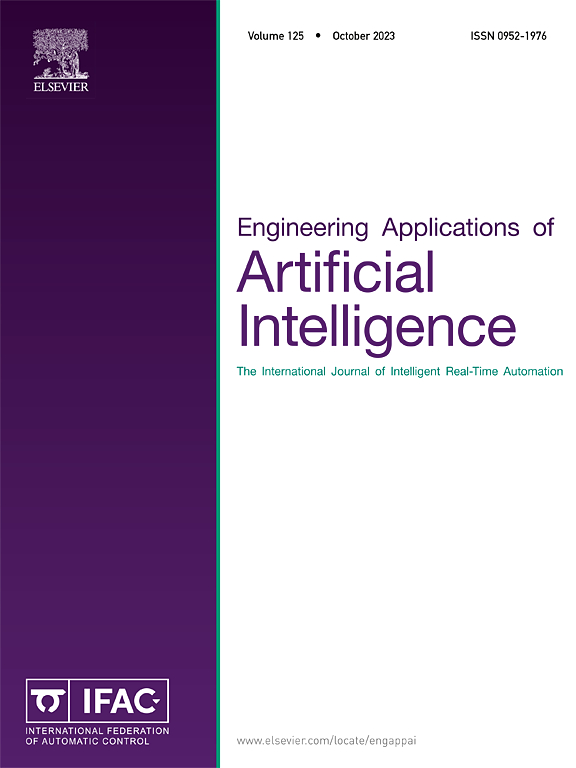基于人工神经网络的均质岩质边坡稳态渗流稳定性分析
IF 8
2区 计算机科学
Q1 AUTOMATION & CONTROL SYSTEMS
Engineering Applications of Artificial Intelligence
Pub Date : 2025-07-02
DOI:10.1016/j.engappai.2025.111556
引用次数: 0
摘要
在设计过程中,确定岩质边坡稳定性的准确和有效的程序是至关重要的,在运输基础设施的管理和维护过程中更是如此,因为岩质边坡应该不断地监测和检查变化的环境条件。岩质边坡的稳定性可以使用稳定性图或极限平衡方法进行评估,这些方法假设岩石具有等效的线性Mohr-Coulomb破坏准则,或者可以处理复杂结构和岩石行为的数值模型,但需要更多的计算资源、专业知识和先进的软件。本文采用人工神经网络(ANN)对二维均质岩质边坡的安全系数进行了预测,同时考虑了岩石的非线性破坏行为、岩石的剪胀性以及与岩石稳态渗流相关的不同地下水位等几个关键因素。这大大扩展了以前在该领域的贡献。考虑岩体韧性系数、无因次边坡高度、人工边坡角度、剪胀率和无因次水位位置,应用不连续面布局优化模型,通过数千次数值模拟训练了一个双隐层人工神经网络。人工神经网络的预测结果与数值结果非常吻合,证明了其作为一种更容易、更容易准确评估岩质边坡安全系数的方法的潜力,并在特定的输入范围内作为传统数值方法的可靠替代方法。它的实现很简单,使用本文中提供的简单方程,并且很容易扩展以执行密集任务并帮助复杂的工程决策。本文章由计算机程序翻译,如有差异,请以英文原文为准。
Stability analysis of a homogeneous rock slope under steady-state seepage using artificial neural networks
An accurate and effective procedure to determine the stability of rock slopes is paramount during the design and, even more so, during the management and maintenance of transportation infrastructures, when the rock slopes should be continuously monitored and checked against changing environmental conditions. The stability of rock slopes may be assessed using stability charts or limit equilibrium methods that assume an equivalent linear Mohr-Coulomb failure criterion for the rock or numerical models that can deal with complex configurations and rock behavior but demand more computational resources, expertise, and advanced software. In this study, an artificial neural network (ANN) was used to predict the safety factor of a two-dimensional, homogeneous rock slope incorporating several critical factors simultaneously, such as the rock's non-linear failure behavior, rock dilatancy, and different levels of the groundwater table associated with steady-state seepage flow through the rock. This greatly extends previous contributions in the field. A two-hidden layers ANN was trained using thousands of numerical simulations applying the Discontinuity Layout Optimization model, considering the rock mass toughness coefficient, non-dimensional height of the slope, artificial slope angle, dilatancy, and non-dimensional water level position. The ANN predictions closely matched the numerical results, demonstrating its potential as an easier and more accessible method for accurately evaluating the safety factor of rock slopes and as a reliable alternative to traditional numerical methods within specified input ranges. Its implementation is straightforward, using simple equations provided in the article, and it is easily scalable to perform intensive tasks and help complex engineering decision-making.
求助全文
通过发布文献求助,成功后即可免费获取论文全文。
去求助
来源期刊

Engineering Applications of Artificial Intelligence
工程技术-工程:电子与电气
CiteScore
9.60
自引率
10.00%
发文量
505
审稿时长
68 days
期刊介绍:
Artificial Intelligence (AI) is pivotal in driving the fourth industrial revolution, witnessing remarkable advancements across various machine learning methodologies. AI techniques have become indispensable tools for practicing engineers, enabling them to tackle previously insurmountable challenges. Engineering Applications of Artificial Intelligence serves as a global platform for the swift dissemination of research elucidating the practical application of AI methods across all engineering disciplines. Submitted papers are expected to present novel aspects of AI utilized in real-world engineering applications, validated using publicly available datasets to ensure the replicability of research outcomes. Join us in exploring the transformative potential of AI in engineering.
 求助内容:
求助内容: 应助结果提醒方式:
应助结果提醒方式:


